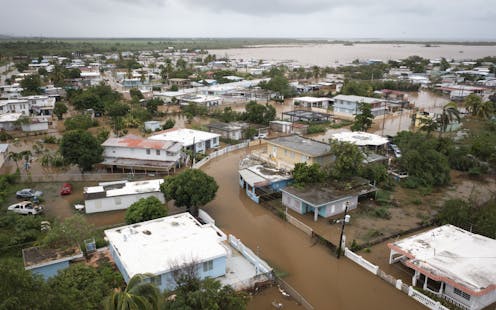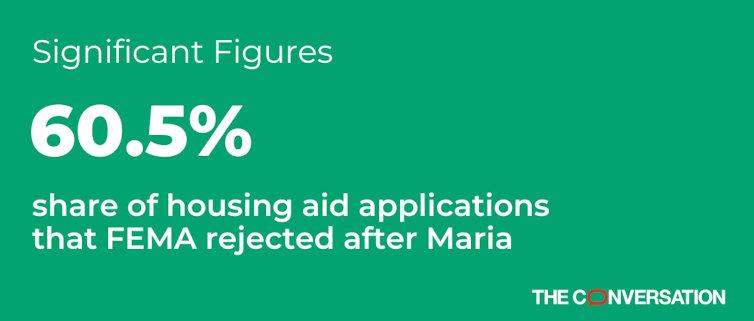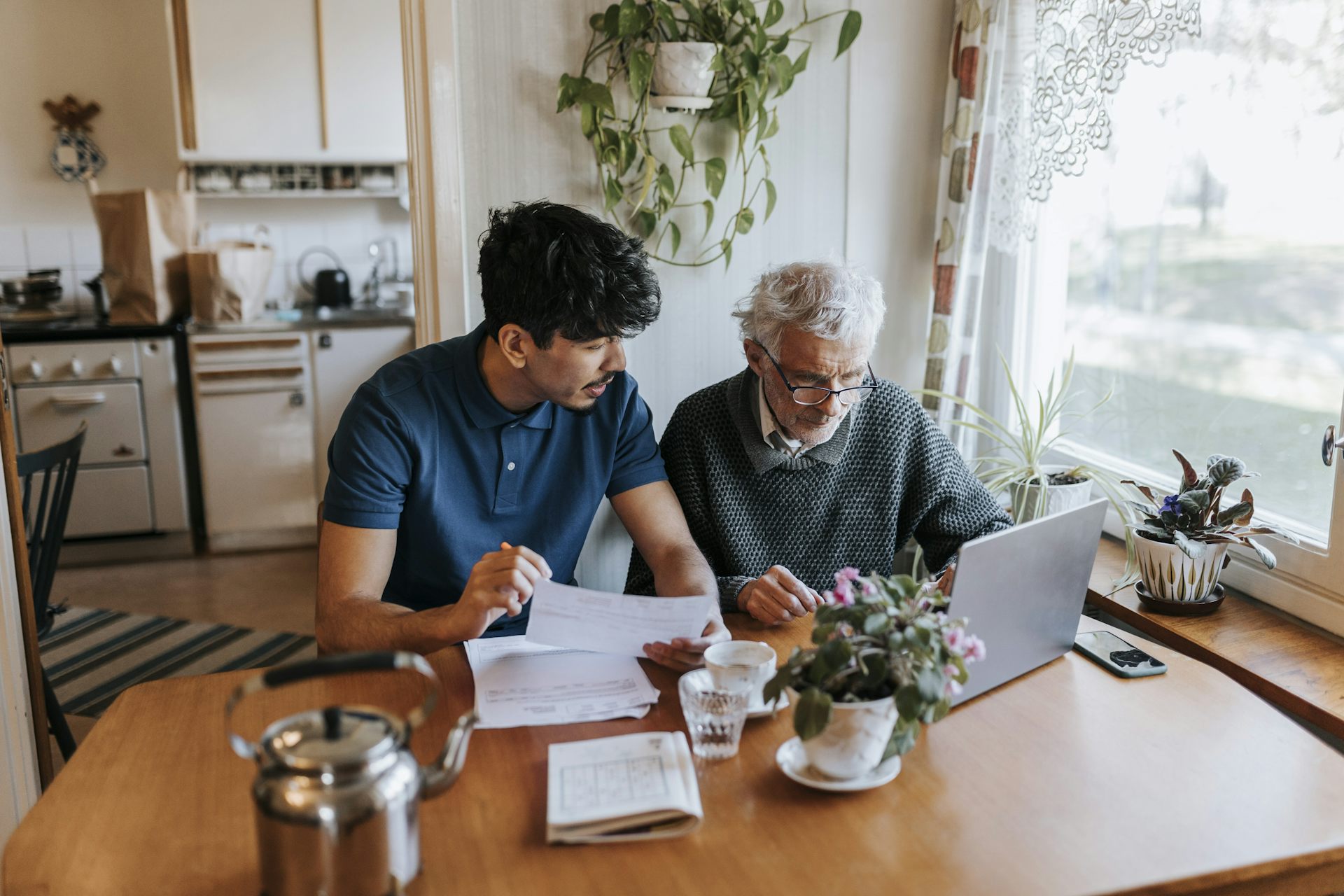More than 60% of Puerto Ricans seeking FEMA aid after Hurricane Maria had their applications denied
Within two weeks of Hurricane Fiona, FEMA had accepted most Puerto Rican housing aid applications. Nearly all those early approvals cover only $700 in assistance and won’t pay the tab for rebuilding.


The Federal Emergency Management Agency rejected 60.5% of the 1.1 million applications Puerto Ricans filed for housing assistance after Hurricane Maria devastated the territory in 2017.
As I explained in an article published in Housing Policy Debate, an academic journal, FEMA used 41 different reasons when it declined a total of 77,000 applicants. The top reason: homeowners lacked legal titles to their properties. Without their names on the deeds, they had no way to prove that they were the true owners of the storm-damaged or destroyed homes.
Other reasons FEMA gave included that it deemed damage to be insufficient or that two households had filed with the same address – which often happens with housing constructed without building permits, architects or engineers.
Five years after Hurricane Maria, I believe the inability of those homeowners to get federal aid surely increased the impact of Fiona, a massive storm that struck Puerto Rico on Sept. 18, 2022. When community leaders assessed the damage, they encountered hundreds of homes still covered with old blue tarps because they never got a new roof after Maria.
As an urban planner who has researched disaster recovery efforts in Puerto Rico, I see those tarps as evidence that FEMA declined applications that it should have accepted. I’m monitoring the agency to see if that happens again this time.
Greatest need but least likely to get help
FEMA offers financial and housing aid after disasters to qualified households who are uninsured or whose insurance won’t cover the full cost of rebuilding. Unfortunately, in Puerto Rico and other places that are especially prone to hurricanes and other disasters, the most vulnerable residents may lack the documentation they need to secure that help.
After Hurricane Harvey soaked Texas in 2017, causing about US$125 billion in damage, FEMA rejected 30% of Texans’ housing aid applications because those households lacked deeds with their names printed on them.
Similarly, after Hurricane Katrina struck the Gulf Coast in 2005, FEMA denied 20,000 applicants who had long occupied homes they’d inherited from relatives without ever getting their homeownership paperwork sorted out.
Some workarounds
To be clear, FEMA can legally accept other forms of documentation as proof of ownership when it considers aid applications.
If there’s no definitive deed, applicants can produce receipts for home repairs or renovations or letters from government agencies verifying residence.
Following advocacy efforts in Puerto Rico, FEMA released new guidance in 2021 with simplified rules for demonstrating homeownership – such as allowing homeowners to make sworn statements.
But at this point, it isn’t clear that FEMA is informing applicants across the United States of alternative ways they can prove ownership. Lawmakers in the House and Senate have introduced legislation that would make the agency work harder to assist all disaster survivors who are eligible for its aid.
After Fiona
Puerto Ricans appear to be applying more rapidly for FEMA aid after Fiona than they did following Maria.
The agency received nearly 1 million requests for housing aid during the first two weeks it was accepting applications, according to Texas Appleseed, a nonprofit that is assisting its Puerto Rican counterparts by sifting through early data to see if federal funds are reaching the most vulnerable households there. FEMA is already authorized to spend $79.4 million on aid.
As of Oct. 18, 2022, FEMA had found 88% of those applicants to be eligible for its assistance, according to Texas Appleseed. But nearly all the approved applicants had received only $700 – the standard amount disbursed as FEMA’s Critical Needs Assistance, which is a onetime payment intended to cover minor expenses incurred amid temporary duress.
Unless they succeed after filing an appeal with FEMA, disaster survivors who get this one-time aid receive no further assistance.
Eager to quickly get that $700, Puerto Rican FEMA aid applicants are leaving out crucial information – such as the degree of damage to their homes – that could lead to much more support, according to the National Low-Income Housing Coalition, an advocacy group.
If they were to get a home inspection, they would need to wait longer for aid but could potentially get up to $37,900 in housing assistance.
It is possible that many applicants will get more aid later, which would cover at least part of the cost of rebuilding their homes. At this point, it’s too soon to know whether FEMA will take a more comprehensive approach when it considers which Puerto Rican homeowners should be eligible for those funds.
Ivis García does not work for, consult, own shares in or receive funding from any company or organization that would benefit from this article, and has disclosed no relevant affiliations beyond their academic appointment.
Read These Next
What’s at stake in Trump’s executive order aiming to curb state-level AI regulation
In the absence of comprehensive federal AI regulation, states have stepped in. The Trump administration,…
Donor-advised funds have more money than ever – and direct more of it to politically active charitie
When foundations make grants to DAFs, the digital trail normally created instead becomes a dead end.
How a niche Catholic approach to infertility treatment became a new talking point for MAHA conservat
Mainstream medical organizations have criticized ‘restorative reproductive medicine,’ but some Catholics…





